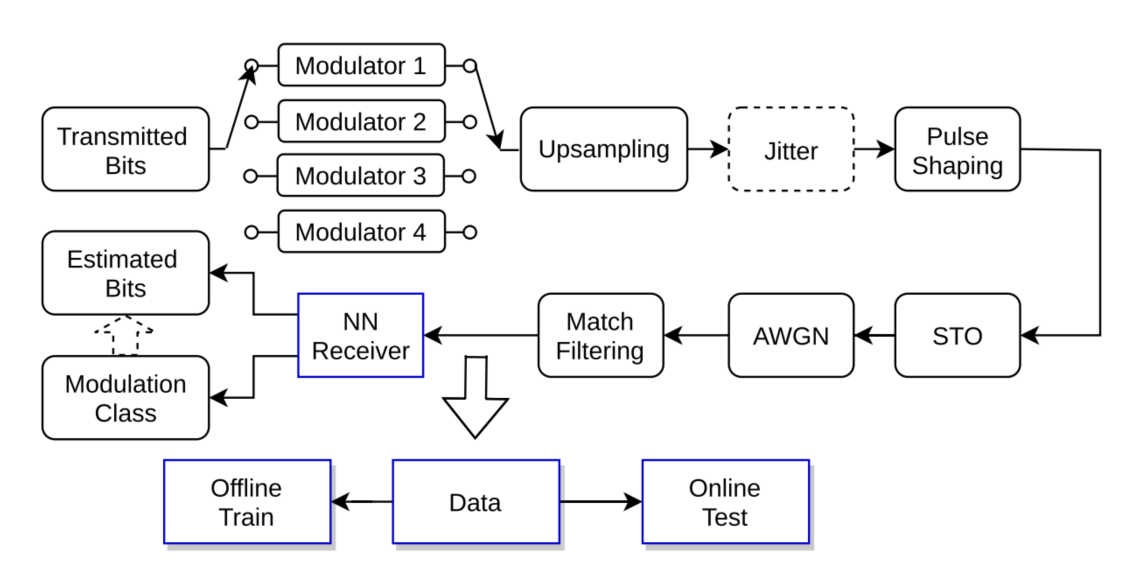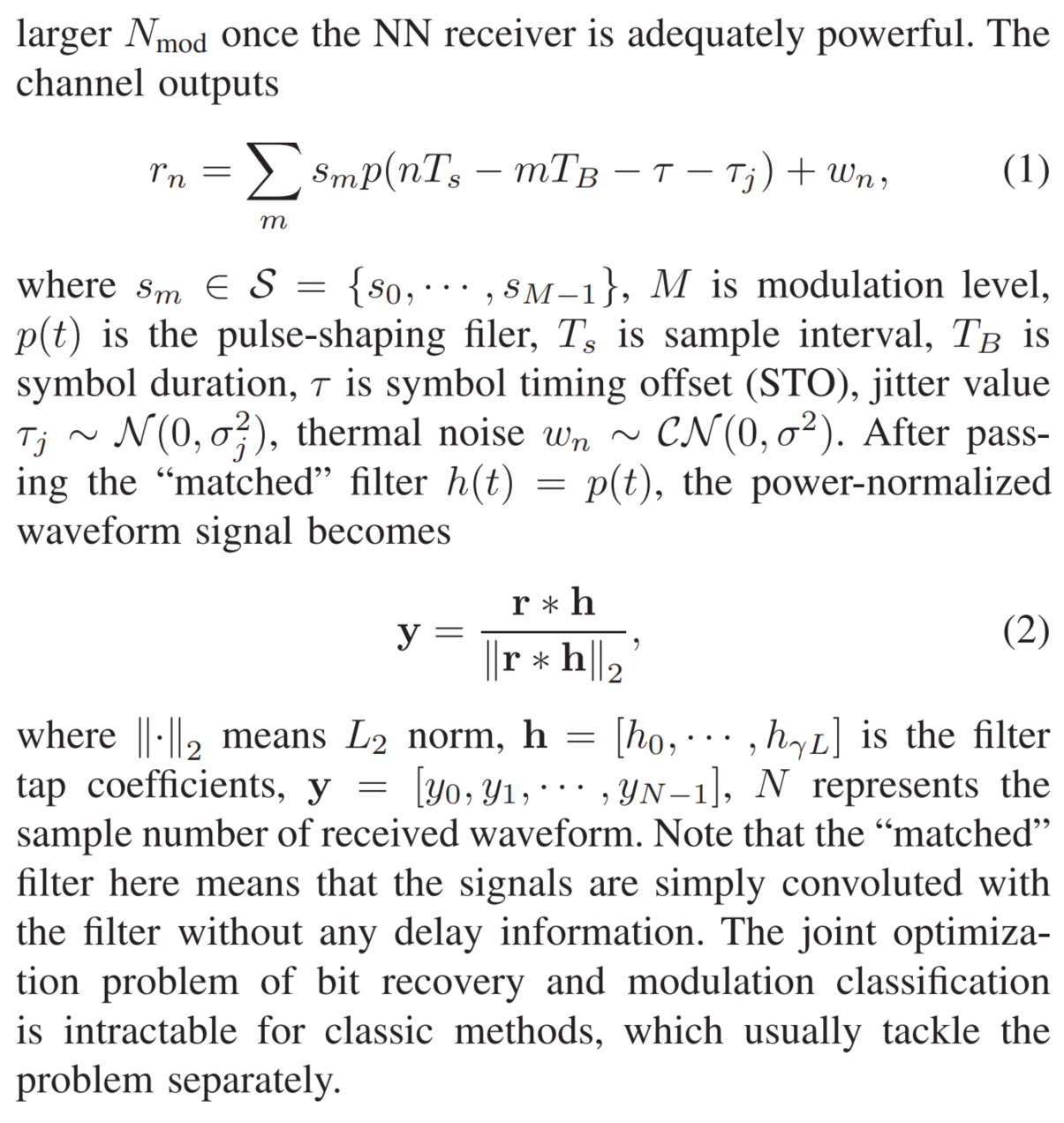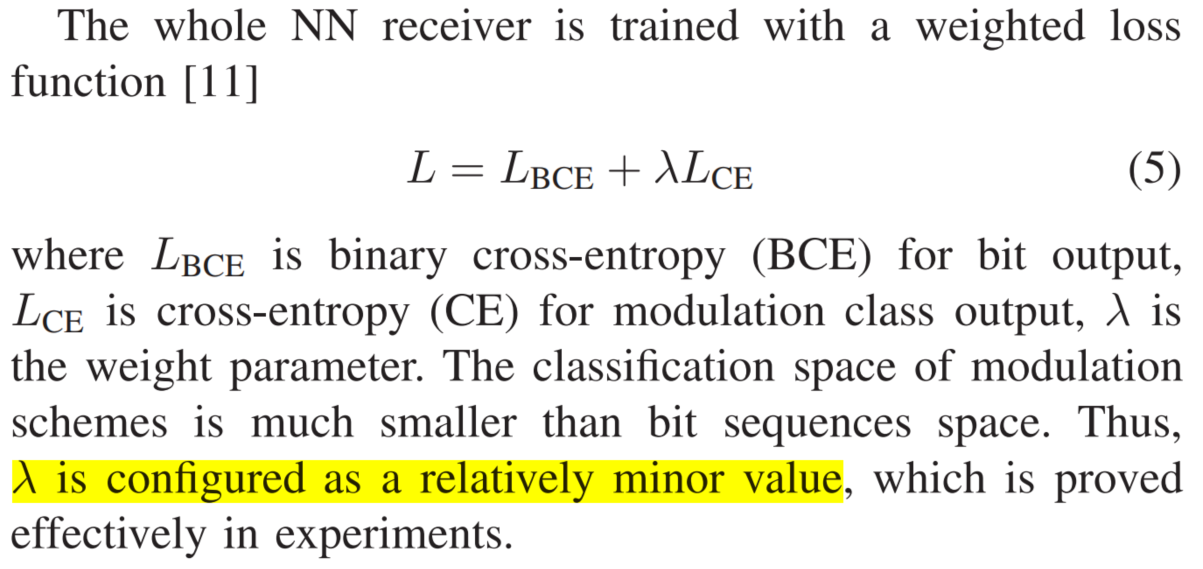Multiple Tasks Receiver Design
Waveform Level Intelligent Multi-Task Receiver With BiLSTM. Zhaorui Zhu et.al. IEEE Communications Letters, March 2022 (pdf) (Citations 1)
简而言之,可以拆分为两个network,一个估计modulation,一个根据modulation结果进行bits recovery。
Quick Overview
- straightforwardly recover bit messages from waveform sequences of unknown modulation schemes without additional time synchronization module. The whole structure is an effective joint synchronization and detection method.
- The first attempt to establish purely one NN to directly process the oversampled waveform sequence with timing offset and blindly recover bits from multiple modulation schemes.
- Numerical results show that one NN can recover bits from four different modulation schemes with BER performance approaching the theoretical value in the ideal channel.

signal model

Network

Bits recovery (left) and Modulation recognition (right)
Three parts
The uppermost two BiLSTM layers extract representation vectors with an overwhelming majority of learnable weights.
They use LSTM layer for the variable-length sequence. And complementary bidirectional structure is applied due to trailing interference of filter between
adjacent symbols.
Reshape received data into

where denotes the number of symbols, and denotes the oversample rate.
Train details
The output unit for “Dense-0” is (it mean the output dimension), while some lower order modulations need to padding zero as

The loss function

本文作者: Joffrey-Luo Cheng
本文链接: http://lcjoffrey.top/2024/01/17/multitaskreceiver/
版权声明: 本博客所有文章除特别声明外,均采用 CC BY-SA 4.0 协议 ,转载请注明出处!